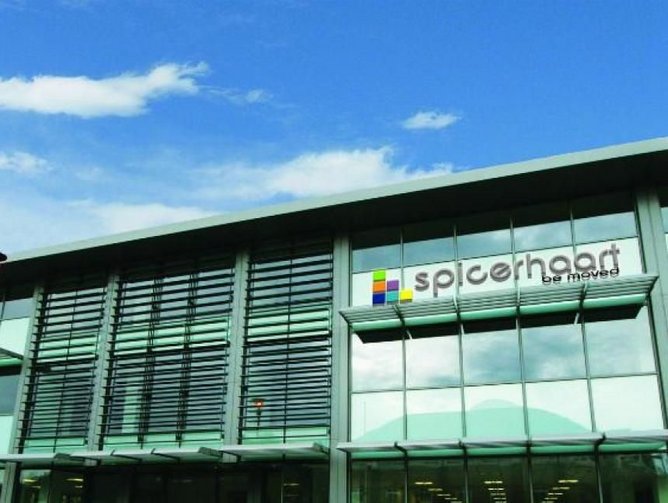In the era of ecommerce, window-shopping has become a thing of the past. Consumers want to browse products and make purchases with the swipe of a finger or the click of a mouse; they want receipts sent straight to their inbox, not taking up space in their wallets. The retail industry already knows this, but the property sector has been somewhat slower in its uptake of technology.
Spicerhaart, one of the UK’s leading estate agency groups, is currently modernising the residential sales and letting process — all the way from the workings of its data centres to interactions in the customer’s home.
Historically, real estate has not utilised technology to its full capacity, but with the advancement of the digital age customers are increasingly demanding online interaction at all stages of the property acquisition process. When tenants or homeowners are looking to move on, they won’t scour the neighbourhood for ‘for sale’ signs, and instead turn to property portals such as OnTheMarket and Rightmove to instantly view homes in their desired locale. Michael Barber, Spicerhaart’s Chief Information Officer, took note of shifting trends and demands in the property sector and set about blazing a tech-trail for the UK market.
Barber recalls that during the last recession many companies held back on investment — opting to use aging IT systems and obsolete infrastructure instead of updating their systems and processes. Spicerhaart was no exception. However, once economic conditions improved, he declares that the business was “ready to reinvest and drive forward for the future.” This reinvention didn’t merely involve updating operating systems or purchasing new machines: Barber’s vision required a comprehensive, three-part digital transformation.
The first step was to design and provide an infrastructure platform that was fit for purpose. To Barber, this meant adopting a combination of centrally-located data centres along with the right tools and technologies for use both in branches and in the field.
“That involved delivering solutions such as a new IT, internet-based telephony solution across the whole business,” he says. “It also involved introducing fully-managed printers with partners Karlson UK, as well as new PCs, laptops, tablets. All of this was deployed across a fully managed, joined-up network seamlessly connecting all of our businesses.”
All of Spicerhaart’s 200 branches across its five estate agency brands in the UK are now fully upgraded and outfitted with enhanced technology. All that remains is to provide tablets to managers in the coming months to enable agile working.
From a customer-facing perspective, clients are likely to observe, and reap the benefits of, fluid in-branch and remote processes.
“The branch workers will be more responsive because the systems are faster,” Barber says.
“They will also get quicker access to information through agile working, using tablets to access corporate information from any place at any time.
“This overall will make the whole customer-experience seem more technology-led, as opposed to technology being an inhibitor.”
Needless to say, it is paramount that Spicerhaart employees learn how to best operate their new technologies in order to streamline customer experience as intended. Their digital transformation is not just a technical one, but a cultural one, too.
“Moving forward, we’re looking for employees to use digital tools to capture information and to let us help lead them to a better solution as opposed to just following the old tried-and-tested traditional methods.
Change-management is integrated into every part of the company’s modernisation process, and guidance is available for anyone needing help adjusting to new, streamlined, paperless processes.
“In terms of the IT applications, they will be pretty intuitive,” Barber says. “In terms of training, we will make use of our dedicated training teams, supported by appropriate, accessible materials, both online and printed materials, as required to ensure proper adoption of the new systems.”
The second step of Spicerhaart’s digital transformation, a head-to-toe online redesign, is still in-progress. Once completed, all of the company’s websites will be delivered using new content management platforms, which will allow in-branch business users and members of the marketing team to maintain web content.
“It’s no longer an IT job to create content,” Barber explains. “The sites are more responsive. Our customers using them on mobile devices don’t get a scaled-down version of the overall functionality because they deploy seamlessly on any device.”
The company is currently also deploying tablet applications which will allow listers to publish a property from within the customer’s home during a first visit — right through to a digitally signed contract and marketing on web sites.
For its third and final act of metamorphosis, Spicerhaart will also be replacing the entirety of its core sales systems: bringing in a Microsoft Dynamics CRM-based solution to transform the way property transactions and customer relationships are managed. This means zeroing in on customers who are genuinely interested in buying, selling or renting a property. With new, big data-based methods for gauging customer interest, the one-size-fits all marketing onslaught will be a thing of the past.
“We want to contact customers who are interested in a property transaction — moving away from leaflet-dropping every house in every area to providing a service to customers who are genuinely interested,” Barber says. “We are putting the customer at the centre and heart of everything we do.”
Unlike many other sectors, real estate is not wholly dominated by a handful of big-name companies or brands. Independent estate agents still have a significant presence in the UK property market. However, Spicerhaart isn’t aiming to out-tech its competition — instead, it wants to use technology to serve its customers in a way that seems intuitive to them.
“We are genuinely looking to transform the business using technology rather than having technology for technology’s sake,” Barber says. “This is all about ‘What do consumers in today’s market typically want?’ rather than trying to only focus on ‘What do property purchasers want?’”.




